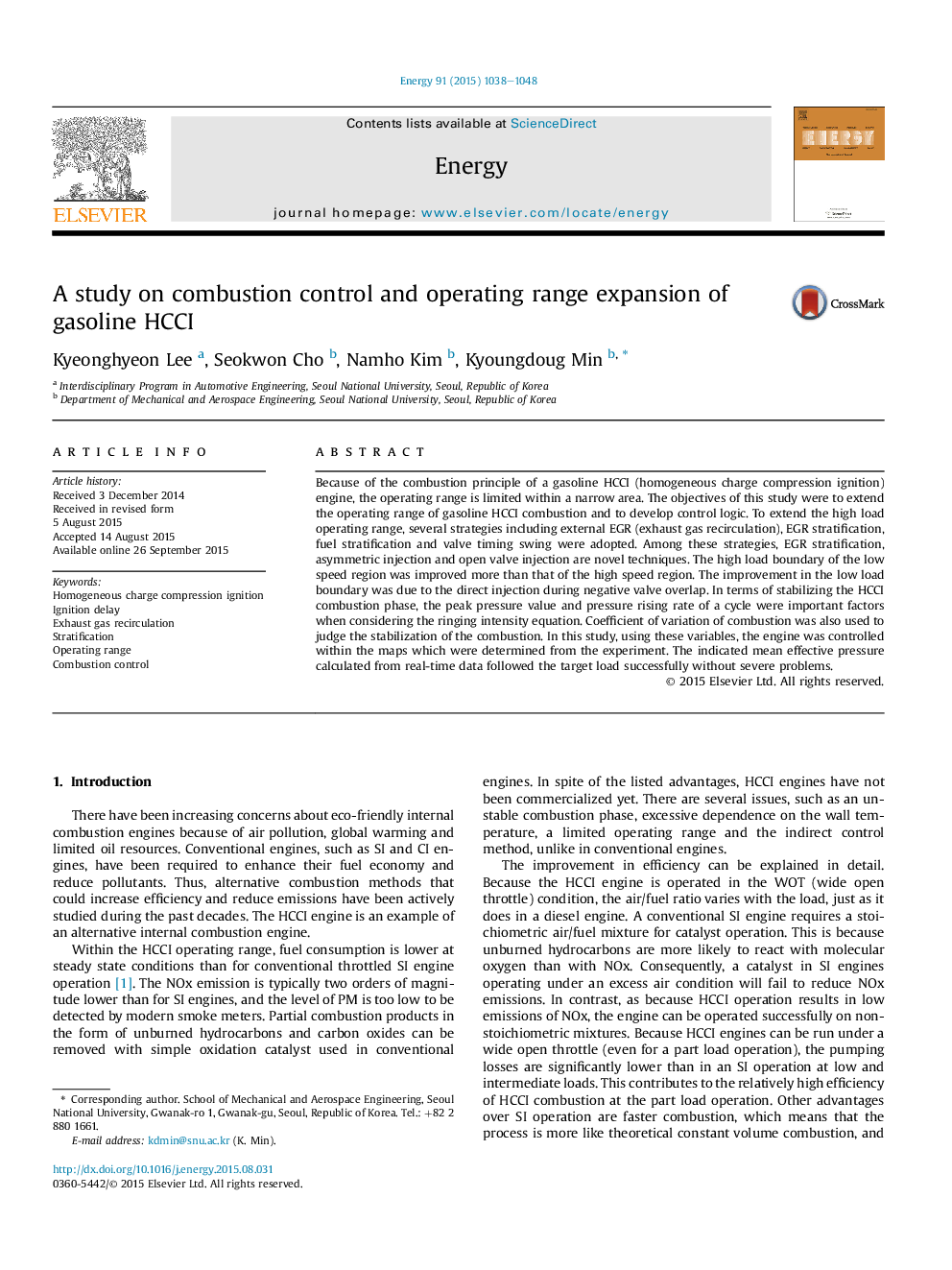| Article ID | Journal | Published Year | Pages | File Type |
|---|---|---|---|---|
| 1731556 | Energy | 2015 | 11 Pages |
•Operating range of gasoline HCCI was expanded with various strategies.•Many strategies including NVO split injection were used to expand the low boundary.•Fuel charge and EGR stratification were useful to expand the high load boundary.•Map-based load control logic was constructed within the expanded operating range.•Transient performance of control was secured within the enlarged operating range.
Because of the combustion principle of a gasoline HCCI (homogeneous charge compression ignition) engine, the operating range is limited within a narrow area. The objectives of this study were to extend the operating range of gasoline HCCI combustion and to develop control logic. To extend the high load operating range, several strategies including external EGR (exhaust gas recirculation), EGR stratification, fuel stratification and valve timing swing were adopted. Among these strategies, EGR stratification, asymmetric injection and open valve injection are novel techniques. The high load boundary of the low speed region was improved more than that of the high speed region. The improvement in the low load boundary was due to the direct injection during negative valve overlap. In terms of stabilizing the HCCI combustion phase, the peak pressure value and pressure rising rate of a cycle were important factors when considering the ringing intensity equation. Coefficient of variation of combustion was also used to judge the stabilization of the combustion. In this study, using these variables, the engine was controlled within the maps which were determined from the experiment. The indicated mean effective pressure calculated from real-time data followed the target load successfully without severe problems.
